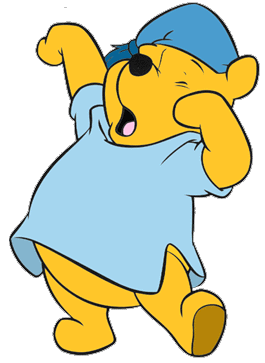
Beginning Reading Design
Sleepy Pooh Yawns O
Beginning Reading Design
Rationale: This lesson teaches students the short vowel correspondence o=/o/. In order to be able to read, children must learn to recognize the spellings that map word pronunciations. This lesson will teach the students to recognize, spell, and read words containing the short vowel o. Students will learn this meaningful representation of Pooh yawning. Students will spell and read words containing this spelling in a letterbox lesson. Lastly, students will read a decodable book that focuses on the correspondence o=/o/, and then complete a worksheet to check their progress.
Materials:
-
Image of yawning angel
-
Cover-up critter
-
Letterboxes
-
Letter manipulatives: c, o, t, m, p, d, g, s, r, b, i, n
-
Chart with words on them: cot, mop, dog, stomp, robin, drop
-
Decodable book “The Tot and the Pot”
-
Short o worksheet (Page 3)
Procedures:
-
Say: “Today in class we are going to learn about the short o sound. Short o is a special sound because it actually sounds like /ah/, like the sound of a yawn. When you say the short o sound, think of an angel yawning making the ‘ahhh’ sound. *shows image of the tired Pooh*
-
Say: “We are going to listen for the sound /o/ in some words. When I hear short o sound /ah/, I pretend to yawn like this *place hand over mouth and yawn saying /ah/*. Now you try! *allow students to make the yawning gesture* Good job! There is a short o in the word mop. Can you say the word mop? *Allow students to say mop* Did you notice and feel your mouth open like you were yawning? Watch me. *Dramatically say mop and draw out the o and pretend to yawn*. I felt my mouth open into a yawn when I said the o in mop. Now let’s try and see if we yawn when we say the word snow. *say snow normally* Did my mouth open like a yawn? No, it did not. Snow has a long O sound, which is different from the yawning short o. Now it’s your turn! If you hear the yawning /o/ then stretch your arms big and yawn, but if you don’t hear the yawning o just say “no!”. Let’s try it. Do you hear the yawning o in lot, stop, hen, pot, toe, stop, pen?” *watch and make sure students make the yawning motion when they say lot and stop*
-
Say: “What if I want to spell the word sock? As in, ‘I put my sock on my foot.’ Before we are able to spell sock in the letterboxes, we need to count the phonemes in the word. To do this, let’s stretch out the word and count them: ssss-ooo-kkk. That means we need three boxes! Let’s listen and see where we hear o! *Allow students to answer, scaffold if it is needed*. ssss-ooo-kkk. That’s right, we hear /o/ after the /s/. The /o/ will go in the second box, so the /s/ will go in the first box. *Place letter tiles in the letterboxes* What sound do you hear next? Let’s say the word slowly, ssss-ooo-kkk. So, you hear the /k/ there at the end.” *Place the letter tiles c and k in the third letterbox. *
-
Say: “Now, I am going to have you spell some words in letterboxes for practice. Let’s start with an easy one: ‘hot’ like It was hot outside. *Observe progress and scaffold if needed* Let’s try some more words.” *Allow students to spell remaining words by having one student at a time come up and model spelling the word with letterboxes, providing sentences for each word: cot, mop, red, stomp, him, drop*
-
Say: “You guys all did a great job using letterboxes to spell those words! Now, you are going to read the words you’ve spelled. When I show the card, read the word that you see back to me.” *Have students read each word: cot, mop, dog, stomp, robin, drop *
-
Say: “Good job! Now we are going to read a book called The Tot and the Pot. Tom is a tot who likes to explore. He sits on a mat, but then he sees a pot. Will he get into the pot? Will his mom be mad? Let’s read the story to find out! *Put students in pairs* Make sure the students take turns reading alternate pages.” *Walk around the classroom and watch and monitor each students’ progress as they read*
-
Say: “That was a fun book, did you all enjoy it? *wait for students to answer* For our last activity today we are going to practice our yawning o words one more time with this worksheet. You are going to cut out all the pictures at the bottom and glue them to their matching word box. *distribute worksheet and collect when they are finished to evaluate the students’ progress*
References:
Decodable Story, “The Tot and the Pot”: https://www.readinga-z.com/book/decodable.php?id=7
Worksheet (Page 3) : https://www.themeasuredmom.com/wp-content/uploads/2017/05/ShrtoWk-1.pdf
Additional Resources: Abby Watson, “A Long, Long Yawn”. https://abbywatson120.wixsite.com/lessondesigns/beginning-reading
Click here to return to the Vista index.
